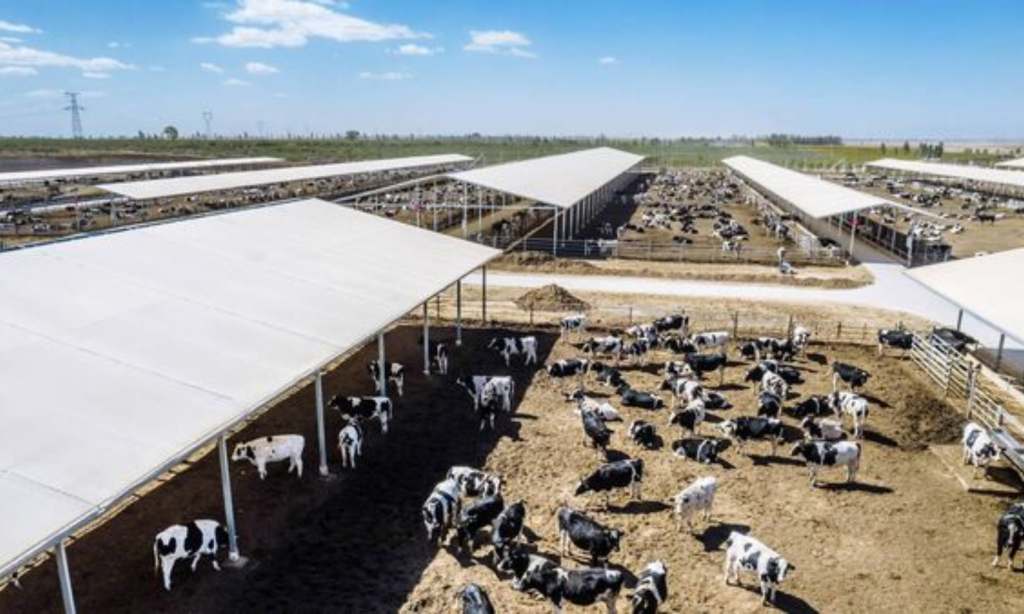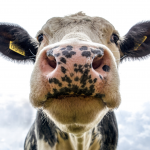
They said this has been starkly evident in the country’s dwindling imports of whole milk powder, which nosedived from an average of 670,000 metric tons (2018-2022) to 430,000 metric tons in 2023.
They described China’s milk increase of 11m metric tons from 2018 to 2023 as a “monumental achievement”. Chinese milk production has been estimated by the United States Department of Agriculture at 41 million tonnes in 2023, up 4.6% from the previous year, and by 28% compared to 2019.
The Rabobank experts said China is the dairy demand domino, and when it falls, it triggers a chain reaction, causing each subsequent domino to topple. Next in the line are New Zealand, the dairy supply domino, and whole milk powder, which is New Zealand’s main export commodity.
In other words, New Zealand, the primary dairy exporter to China, is grappling with the formidable challenge of seeking out new markets for nearly 150,000 tonnes of whole milk powder no longer required in China.
This equates to almost 1.3m tonnes of milk, or 6% of New Zealand’s annual milk production. New Zealand’s subsequent search for buyers of whole milk powder, skim milk powder, milk fat, or cheese, made from 6% of its national milk production, has inevitably intensified competition with its rival dairy-exporting regions, led by the EU and the United States.
It is this competition that has caused lower-than-average global milk powder prices, according to the Rabobank analysts. And the dominoes fall all the way back to the dairy farmer, who is now getting the lowest milk price since the winter of 2020.
That’s the outcome according to the International Farm Comparison Network’s Combined World Milk Price Indicator, which says the average world price was about 42c USD in May, 2023 (per kg of solid-corrected milk at 4% fat and 3.3% protein). It reached nearly 44c USD in June, 2023, but then fell to about 36c in August. Since then, the price picked up, consistently, reaching 43c in May, 2024, about the same as 12 months previously.
It’s a let-down for farmers, after the heady heights of the spring of 2022, when milk prices topped 60c globally.
But how will the global market react now? Will China’s self-sufficiency serve as an example to be emulated in other dairy-deficient regions, or will it create a market opportunity for importers previously priced out of the marketplace? That is the question posed by the Rabobank analysts.
Chinese demand was the driving engine for the global dairy market in recent years. The pandemic and ensuing economic challenges weakened Chinese demand, and their stronger domestic milk production has further weakened China’s demand for imports.
Finding new markets for product from China’s biggest dairy supplier, New Zealand, will stagnate global commodity prices, unless the scarcity of supply in some regions can keep the market in equilibrium.
Market signals were negative at last week’s Global Dairy Trade auction. Prices dropped for the first time since March. The 0.5% fall across the board followed 12 auctions, of which nine had resulted in increased prices.
However, on this side of the world, EU dairy exports held up, at least in January and February, with more recent data not yet available.
The biggest export item, cheese, was up 7%, Next biggest, skim milk powder, was down 9%. Butter and whole milk powder exports are each only about one-fifth of cheese exports and one-third of skim exports. Whole milk exports were up 18%, butter was down 1%. So no major weakness is evident in the EU’s world-leading dairy export volumes. Demand seems to be more than making up for the EU milk supply, increasing by 1.2% in the first quarter of 2024.
Dutch milk supplies have fallen since September, due to the bluetongue virus and the phasing out of the nitrate derogation. Supplies are down 1.2%. The even stronger decline in Ireland (down 6%) has continued. But the overall EU milk supply increased by 1.2% in the first quarter of 2024, led by a 4% jump in Poland, and slight gains in Belgium, Germany and France.
Closer to home, there was encouragement for Irish dairy farmers last week when Tirlán increased its May creamery milk price by 0.5cpl, compared to April.
Chairman John Murphy said: “There has been a welcome increase in returns for some dairy products in the past month, led by butter and cheese, and driven by reduced milk supply volumes in some regions. However, there is uncertainty on the impact of higher prices on consumer demand over the coming months”.
Albeit cautious, that’s a more welcome dairy market prognosis than the latest in the No 2 global exporter, New Zealand, where Fonterra’s opening milk price forecast for next season dipped below bank predictions. Senior agriculture analyst Emma Higgins at Rabobank said this would likely provide another season of “fiscal constraint” for New Zealand’s dairy farmers.
Softer import demand from New Zealand’s main dairy trading partner, China, for a third consecutive year, is the critical factor in farm-gate milk price forecasts.
However, that is somewhat countered on the supply side, because global milk production has continued to lose steam. In New Zealand itself, milk tonnages were back 0.5% on the season to April.
Meanwhile, the United States, the No. 3 global dairy exporter, is also unable to boost milk production significantly due to a scarcity of replacement heifers, the continued spread of bird flu in dairy herds, and a heat wave. So far in 2024, the US milk supply is back by 1%.
In Argentina, milk production has been free-falling for some time, down 14% year-on-year. The supply in Uruguay also fell somewhat, but Australia has bucked the trend with a 3% increase.
The aggregate milk volume of major dairy exporters (including the EU) was estimated to be up 0.6% in 2024, up to and including March.
With Chinese demand dwindling, dairy farmers around the world may have to rely on this slowing of growth in global milk output to support milk and dairy product prices.

























